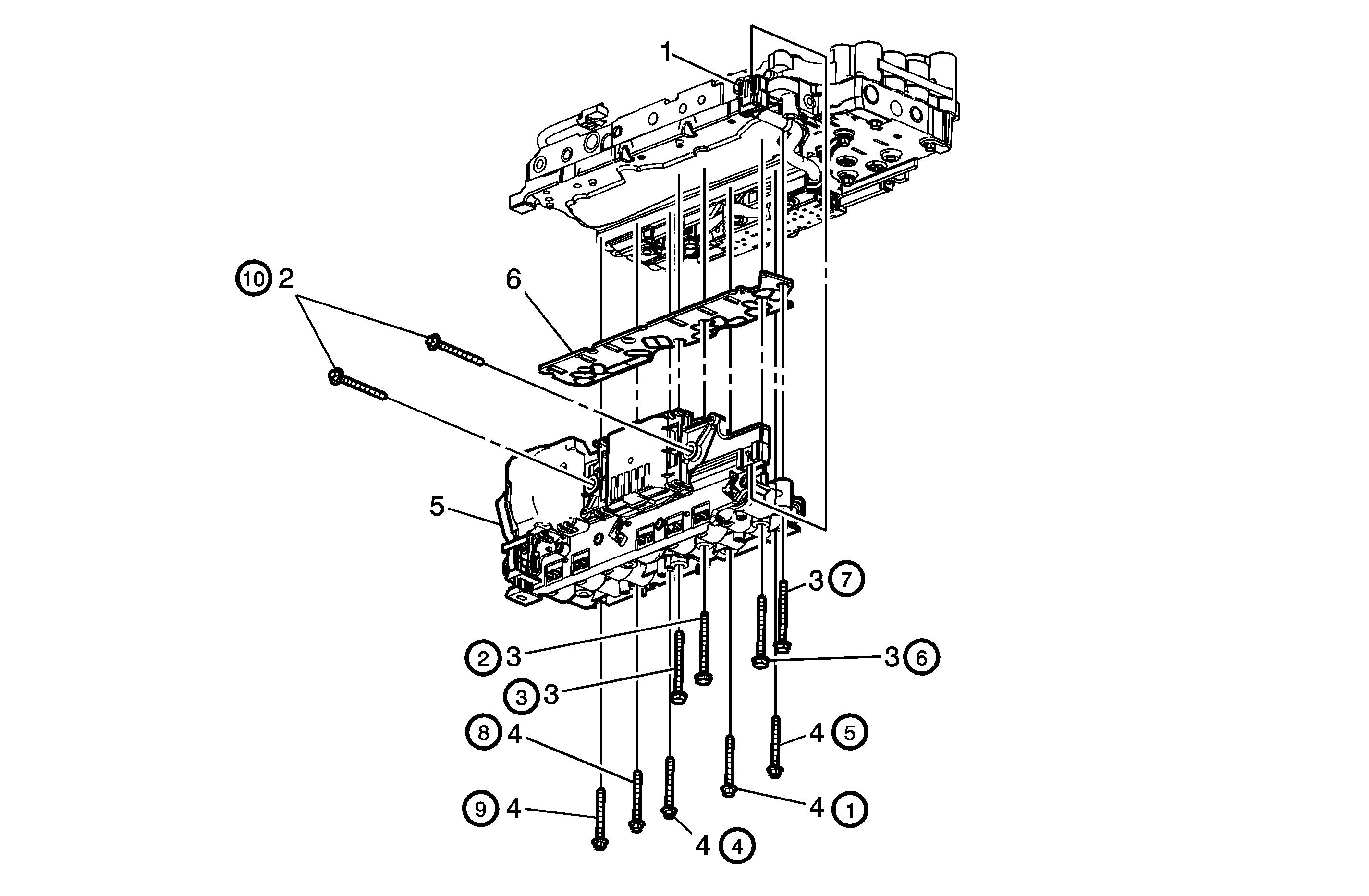
Callout | Component Name | ||||
|---|---|---|---|---|---|
Preliminary Procedures
| |||||
1 | Manual Shift Shaft Position Switch Assembly Electrical Connector Tip | ||||
2 | Control Module Assembly Heat Sink Bolt (Qty: 2) Caution: Refer to Fastener Caution in the Preface section. Tip Tighten | ||||
3 | Control Solenoid Valve Assembly Bolt (Qty: 4) Tip Tighten | ||||
4 | Control Solenoid Valve Assembly Bolt (Qty: 5) Tip Tighten | ||||
5 | Control Solenoid Valve and Module Assembly Refer to Control Module References. Procedure
| ||||
6 | Filter Plate Tip | ||||
Following the replacement of the TCM, a harsh upshift may occur between 4th and 5th gear.
If this occurs the following procedure should be followed.
| • | Make sure both the Scan Tool and TCM calibrations are the latest versions available for reprogramming. |
| • | Check and clear all DTCs that may have set as a result of the programming process. |
| • | Drive maneuvers should be performed at transmission oil temperatures of at least 40°C (104°F). |
| • | Transmission oil levels should be set correctly prior to the starting drive cycles. |
| • | Initial upshifts may have an erratic feel for the first several cycles. They should improve significantly with repeated maneuvers. |
| • | At the start of the drive cycles, no ECM or TCM DTCs should be set. The MIL should not be illuminated. |
A drive cycle requires five light throttle accelerations to 40 km/h (25 mph) and five light throttle accelerations to 64 km/h (40 mph).
- From a complete stop, lightly accelerate at a relatively constant throttle pedal position up to 40 km/h (25 mph) or 64 km/h (40 mph).
- Brake the vehicle to a complete stop.
- Repeat five times to 40 km/h (25 mph) and five times to 64 km/h (40 mph). Maneuvers can be performed in any combination.
If the garage shifts (Park to Reverse, Park to Drive, Reverse to Drive, Drive to Reverse) feel like they are delayed, garage shifts adapts can also be performed. All garage shifts should be performed with the vehicle stopped, foot on the brake and engine at idle.
- Shift the transmission from Reverse to Drive leaving the shift lever in Drive for three seconds. After three seconds, shift back to Reverse, leaving the shift lever in Reverse for three seconds. Perform the procedure 10 times (R-D-R-D-R-D...). The transitions need to be directly to Drive and Reverse, without stopping in Neutral.
- Shift the transmission from Neutral to Drive leaving the shift lever in Drive for three seconds. After three seconds, shift back to Neutral, leaving the shift lever in Neutral for three seconds. Perform the procedure 10 times (N-D-N-D-N-D...).
- Shift the transmission from Neutral to Reverse leaving the shift lever in Reverse for three seconds. After three seconds, shift back to Neutral, leaving the shift lever in Neutral for three seconds. Perform the procedure 10 times (R-N-R-N-R-N..).
At the end of these maneuvers, the vehicle may still experience some minor driveability issues, but should learn improved shifting performance over the next several key cycles and driving time. Coach the customer about the transmission's ability to self-correct shifting issues or concerns. The transmission adapts are always functional and operate at transmission oil temperatures above 40°C (104°F).
